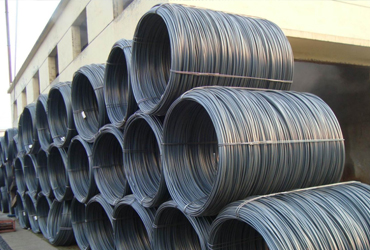Tel :
Tel :

The cold heading steel wire rod adopts controlled rolling and controlled cooling technology to prevent the appearance of martensite, bainite and Widmanite structure, and the structure and performance are good. The cold-heading steel wire rod produced is mainly used for subsequent drawing and cold-heading forming to manufacture various mechanical standard parts and fasteners.
Cold heading steel wire rod Mechanical requirements:
1. The yield strength σs and the deformation resistance scale may be small, so that the unit deformation force can be reduced correspondingly to extend the life of the mold.
2. The cold deformation performance of the steel should be good, that is, the material should have better plasticity and lower hardness, which can not cause the product to crack under a larger degree of deformation.
3. The work hardening sensitivity of the steel is as low as possible, so as not to cause too much deformation during the cold upsetting process.
Cold heading steel wire rod Application:
The steel used to manufacture fasteners and connectors (such as bolts, nuts, screws, rivets, etc.) by cold heading processing is called cold heading steel, commonly known as riveting steel.
Commonly used are quenched and tempered alloy steel, low-temperature tempered alloy structural steel, low-carbon low-alloy high-strength steel, ferrite-martensitic dual-phase steel, etc.
Cold heading steel wire rod Production Process:
The process flow of cold heading steel production: molten iron → converter → refining furnace → continuous casting (die casting) → billet inspection → blooming and continuous rolling → billet grinding → high-speed hot-rolled wire rod → finished product inspection → storage .
The cold heading steel continuous casting process mainly includes the following points:
(1) The castability of molten steel is poor and nozzle nodules are prone to be formed. Therefore, strictly control the cleanliness of molten steel, reduce AI2O3, inclusions and sulfur content in steel, and strictly control acid-soluble aluminum in steel at 0.02%~0.04%, calcium The aluminum ratio is greater than 0.09.
(2) The baking temperature of the tundish is greater than 1100°C. In the first furnace of the tundish pouring, part of the alkaline earth metal alloy is added to the tundish in advance to denature the AI2O3 and inclusions; the tundish is filled with argon and the tundish covering agent is added in time.
(3) Casting is protected throughout the casting process.
(4) The tundish adopts ceramic filter or pipeline ceramic air pipe to remove non-metallic inclusions.
(5) The liquid level automatic control system is used to stabilize the molten steel at the level of the mold liquid level to realize steady-state casting.
(6) Electromagnetic stirring of the mold is used to improve the surface quality of the cast slab and reduce internal cracks and central defects.